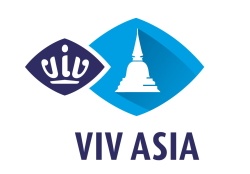Ronald Jan Corbee

Assistant Professor at the Faculty of Veterinary Medicine, Utrecht University
Ronald Jan Corbee received his DVM degree from Utrecht University in December 2003. After several temporal positions in first line companion animal practice he was employed by Dierenkliniek ‘t Ossehoofd in Heerhugowaard, where he worked for 2 years as a veterinarian for companion animals. In December 2006 he opened his private practice, which he sold in 2016. He passed the board certifying exam in Veterinary Nutrition (Diplomate of the European College of Veterinary and Comparative Nutrition) in Zaragoza (Spain) in September 2011. He successfully defended his PhD (Nutrition and the skeletal health of dogs and cats) on the 28th of August 2014. In March 2013 he was awarded the University Teaching Qualification. At the moment he is employed as Assistant Professor at the Faculty of Veterinary Medicine, Utrecht University.
Petfood & Hypersensitivity
Hypoallergenic pet foods are extremely popular among pet owners, and their availability exceeds the true demand. Hypoallergenic means designed to reduce or minimize the possibility of an allergic response, as by containing relatively few or no potentially irritating substances. From a legislation perspective, there are no clear requirements on effectivity to be allowed to make this claim. Common aspects of these diets are the use of selected protein sources and/or selected carbohydrate sources. Unfortunately, a lot of diets that claim to be hypoallergenic are “contaminated” with traces of other protein sources. Animal proteins are the most common causes of allergies, whereas wheat and barley are less likely to cause an adverse reaction to food (ARF) in cats and dogs. Both cutaneous, gastrointestinal, and combination ARF have been described. Current tests that are on the market to make the diagnosis are unreliable, so a restriction (elimination)-provocation dietary trial remains the golden standard. For a proper elimination trial, a novel protein source must be selected. Veterinarians have either home cooked or commercial diet options. The home cooked elimination diet consists of the selection of one novel protein source, which can be combined with a carbohydrate source to limit its costs. Home cooked elimination diets are deficient and should not be fed for more than 12 weeks in adult dogs and cats and not more than 3 weeks to puppies and kittens. Home cooking can be considered labor intensive, so commercial diets can be an alternative. Commercial diets should have 1 novel protein source or contain hydrolyzed protein. The degree of hydrolyzation is important, the further the proteins are hydrolyzed, the less likely it will evoke an adverse response. The further a protein is hydrolyzed, the less palatable it will be, so this might cause non-compliance. The benefits of commercial novel protein or hydrolyzed protein diets is that they are complete and balanced. Some of them are also complete and balanced for puppies and kittens. The final diagnosis is made when the clinical signs disappear on the elimination diet and reoccur after a challenge with the previous diet, and again resolution on the elimination diet. Most pet owners don’t want to go for this option, so this might overestimate the diagnosis.
It is important to be very strict during an elimination trial and also when treating dogs and cats with ARF. A single crumb of bread might result in relapse, as well as licking plates from the dishwasher that was left open. Also during walks or outside access, dogs and cats may eat something which they cannot tolerate. Flavored medication or gelatin in tablets and powders might be causative factors for ARF. When relapse occurs, symptomatic treatment as well as treatment of secondary infections are often necessary. A lot of pet owners are impatient and want to switch immediately when they assume that a new diet is not effective within a few days, or if the symptoms get worse. It is really necessary to stick to the 6-8 week period to determine the effects. When symptoms worsen they should revisit the veterinarian for a thorough diet history and evaluation of possible secondary infections. Good owner education is important for the pet food industry to increase owner compliance and owners’ awareness of the importance of feeding only the hypoallergenic diet.
“Hypoallergenic” diets should have a limited number of (hydrolyzed) protein sources (preferably just one), and should not contain traces of other then the declared protein sources, to be truly hypoallergenic. If these criteria are met, these commercial hypoallergenic diets can be a good alternative for home cooked elimination diets.
VENUE IMPACT
City Bangkok
Country Thailand
Dates
March 12-14, 2025
Opening hours
10.00 – 18.00 hrs


